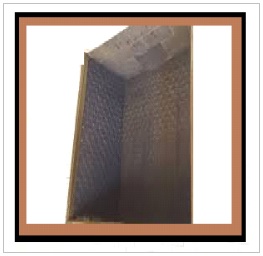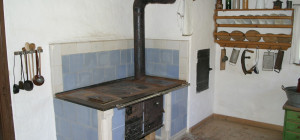
As the fire in the furnace roars, the combustion inside the firebox creates creosote, soot, ash, and smoke. A considerable amount of scrap wood and logs are the source of the fire. It is an extremely labor intensive job to clean up the accumulated soot, and ash. It often leads to relighting the fire while maintaining the embers to burn the next timber.
Acquire some knowledge about the associated equipment,s:
- Fireback:
It is a massive sheet of metal, usually a cast iron lying behind the fire. It protects the masonry. It reflects heat into the house. Firebacks used to have negligible validity about 100 years earlier when there was no presence of many substitutes. Now, several decorative firebacks are available in the market.

Fireback
- Fireplace doors:
The doors decrease the amount of air that would else draft up the chimney. Some amount of heat may radiate through the doors depending upon the glass types. Tempered glass is used in making cheap entries that can easily break during burning. On the other hand, expensive ceramic glass doors produce little improvement in the efficiency. The saddest part is that the fireplace doors are not entirely tight enough to stop the cold air from backdraft while the fireplace is not in use.

Fireplace Door
- Damper:
It is the metal plate that is used for regulating the airflow via the chimney. New dampers fit comfortably and get deformed within a couple of years. They become loose fit and the air leaks through them. The chimney damper seizes the entire chimney top reducing the heat loss when the fireplace is idle.

Damper
- Radiators and grate heaters:
They aren’t significant as fireplace inserts, but, are capable of capturing a right amount of heat from the heat and release it into the room.

Grate Heater
- Make your fireplace efficient- Increase the wood burning efficiency – Do it Yourself
Install an insert that must be approved by the U.S. Environmental Protection Agency (EPA). Since the last decade, fireplace inserts have gained more energy efficiency. The fireplace insert is a woodstove that fits flexibly into a masonry fireplace.
- Look for stainless steel liner that should run to the chimney top.
- Then, it’s time to add some equipments to the stove. Add a catalytic combustor insert to the wood stove for increasing the amount of heat and efficiency. You will get it at the stove supply store and online. The converter influence the kindling of the pollutant gases from within the stove resulting in decreasing the amount of unwanted discharges that go up the chimney through the funnel. Hence, you will receive the heat faster with less wastage of wood.
Install a fan or a blower for pushing the heat away from the wood stove and circulate in other cold areas to make them warm.
- Seasoning of the wood is essential.
Freshly cut logs have 35 – 60% moisture content. If you intend to burn these timbers, it will take excessive energy. The water is needed to be vaporized by releasing undesirable smoke and gases due to the insufficient production of heat for combustion.
If you season the woods, it will increase the speed of the entire process, and you will get more heat rapidly. The woods must be dried for at least 6 months. The U.S Forest Service says that a term from six months to twelve months is accurate for drying wood.
Enjoy good burning as the seasoned wood burns more energy efficient than the moistened freshly cut ones. As per the recommendation of the USFS, wood splitting and stacking orderly is required for the optimal drying. Cover the piles keeping the stacks in a sunny area so that they can dry but not get affected by rain, dew, and other moisture. Tuck the timbers for stopping the insects from destroying the stacks.
- Cleaning and repairing the wood stove, flue, chimney and keeping them clog-free is the essential job needed to be done. Professional chimney sweeps can be of the most significant help as they have the state of the art equipments and adequate training to inspect, diagnose and fix the issues of the entire fireplace. So, before the winter knocks your door, be sure that your furnace and the associated parts are healthy and polished. Check if the airways are free of obstruction. Cracks must be refitted because it can be a source of the house fire as per the statement of the Environmental Protection Agency.
- Softwood kindling is the best. Fir, pine, etc. are good for starting the fire. The low density of these woods helps in faster burning than the dense woods. But, as per the suggestion of the U.S. Forest, denser woods like cherry and oak offer more heat energy and produce less smoke while burning for the more extended period.
Your high efficient fireplace is ready to give you the desired warmth without harming the house and the health.
Contributed by:www.jamesthesweep.co.uk







